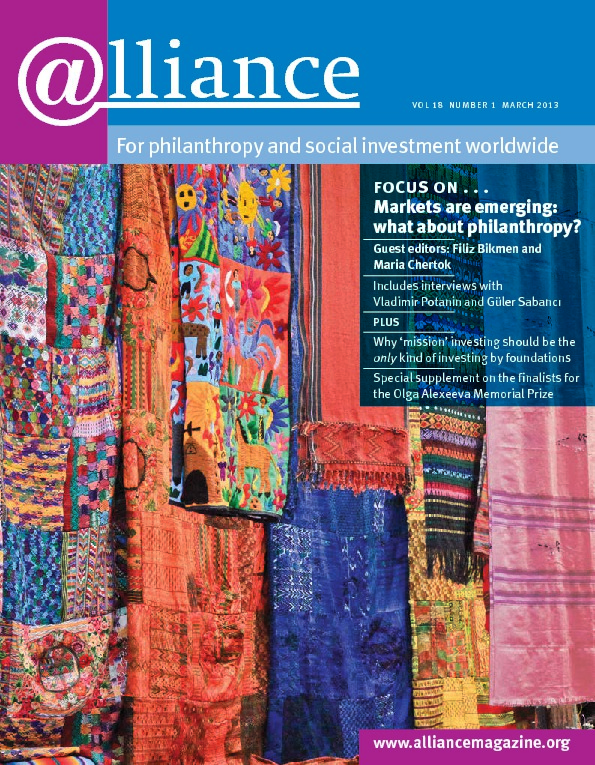Foundations face crucial spending challenges over the next few years. Weak economic growth and austerity regimes will increasingly take their toll on social wellbeing, and needs will rise. Foundations, however, are unlikely to have increased resources. UK research supported by Pears Foundation[1] shows that foundations’ combined assets  and spending power were still lower in 2011 than in 2007/08 when the economic crisis broke. Foundations believe there will be less money in future. This means they will be forced to make some hard choices. While some are planning for this, many are far from prepared and visions are unrealistic.
and spending power were still lower in 2011 than in 2007/08 when the economic crisis broke. Foundations believe there will be less money in future. This means they will be forced to make some hard choices. While some are planning for this, many are far from prepared and visions are unrealistic.
The research studied the largest UK family foundations, representing around three-quarters of grantmaking foundations by value, which gave £1.3 billion in 2010/11. Given the dominance of the giant Wellcome Trust, it is not surprising that the top cause supported is health and biomedical research (56 per cent), which remains a priority even without Wellcome. Other top causes were education (20 per cent) and arts and culture (18 per cent) – areas which, like health, attract major, capital and long-term commitments. Social welfare represents just 15 per cent of spending, but foundations are overwhelmingly concerned that reductions in state welfare expenditure will lead to increased demand. Almost a quarter think social welfare will attract increased funding in future (23 per cent).
But there is as yet little indication of where this extra could come from. In fact foundations seem to anticipate an increase in spending in most key areas, far exceeding areas of potential spending decrease. Spending cuts are clearly difficult to face up to. In addition, major national investments in health research, arts or education facilities are relatively inflexible, and cannot easily be diverted to other areas. As one foundation noted ‘… [we are] still funding areas that the state underfunds’.
A major challenge is that while the foundation sector globally wants to achieve maximum social benefit with limited resources, there is little research or evidence to inform foundation decision-making. Outside the US, apart from occasional ad hoc surveys, foundation sectors do not collect regular and consistent data on their spending. Some foundations reveal almost nothing, and where data is provided it varies widely in amount of detail, using different and idiosyncratic approaches to classifying it. This means it is impossible to track or compare current patterns of spending among foundations, or to identify any significant changes of direction. Foundations have a limited picture of their collective funding impact, and where significant gaps lie in meeting needs. With better data and research, they could identify and target needs more effectively.
But basic data is not the whole story. The research found considerable foundation reservations around current ideas for making more effective use of resources to maximize social benefit. While one foundation commented that ‘collaboration, pro-active grantmaking and “Grants Plus” should all enable us to increase the impact of our funding’, many foundations are wary of partnership, particularly with government. They strongly value their independence. Such reservations are healthy and unsurprising given how little objective evidence there is on the effectiveness of partnerships in increasing resources, or whether foundations, government or the private sector prove the most effective partners, or what kinds of interventions produce the greatest impact.
The option of social investment – that is, providing loans and other financial investments that offer some return on capital instead of simply giving it away as grants – was similarly found to be hedged with reservations. A few foundations are embracing it as a way of tackling pressure on resources, but for the majority both economic uncertainty and a lack of knowledge are perpetuating a reluctance to take risks. Social investment is another area where anecdote and exhortation desperately need to be replaced by hard evidence. Its proponents need to demonstrate that beneficiaries will not lose out if funds are distributed in this way. As one foundation said, ‘social investment is being considered as an interesting new area, but not yet mature enough for us to participate.’
Foundations are facing a time of change, but under-investment in data and research means they lack a ‘compass’ to guide their choices. With growing social needs, and little prospect of increasing income, it is even more important for foundations to invest in better data and research evidence on how to respond effectively over the difficult years ahead.
1 Family Foundation Giving Trends 2012, produced by Pears Foundations and CGAP, was launched at UBS last December. http://www.pearsfoundation.org.uk/#36/philanthropy
Cathy Pharoah is co-director of the Centre for Charitable Giving and Philanthropy (CGAP) at Cass Business School. Email Catherina.Pharoah.1@city.ac.uk
Charles Keidan is a philanthropy professional (former director of Pears Foundation). Email charleskeidan@gmail.com





Comments (0)